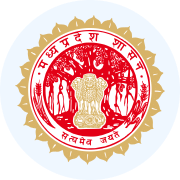Education infrastructure and education policy of Madhya Pradesh | Course for MPPSC Preparation - MPPSC (Madhya Pradesh) PDF Download
Education infrastructure and education policy
Like in most other states across India, Madhya Pradesh also follows the 10+2+3 tier of education. There is government as well as private education institutes across this Central Indian state. Hindi is the preferred medium of instruction in the government monitored schools and colleges of Madhya Pradesh. English is used as the language of communication between students and teachers in private institutes. The division of education in Madhya Pradesh can be explained through the following chart:
- Primary Schooling
- Secondary Schooling
- College Education
- University Studies
- Research Programs / Professional Degrees and Diplomas
The State literacy rate presently is 70.63% (source: Census 2011), against the national literacy rate of 74.04 %. While the female literacy has considerably improved over the last decade, a great disparity persists in the literacy rates of males and females.
Education infrastructure
The School education in Madhya Pradesh primarily organized in two sectors: Elementary (I to VIII) and Secondary (IX to XII). Each of these two sectors are further sub-divided into two sub-sector where elementary education consists of primary education (I to V) and upper primary education (VI to VIII) while the secondary education comprises of Middle education (IX and X) and higher secondary education (XI and XII).
Elementary level School facilities in Madhya Pradesh

Secondary and Higher Secondary schools
- There are four main types of recognized schools by management and funding pattern in Madhya Pradesh. They are: Government, Local Body, Private Aided and Private Unaided.Out of the total Government schools in Madhya Pradesh, majority are managed by School Education Department. Tribal Welfare Department also manages a significant number of schools.
- The distribution of secondary schools between categories shows that out of the total schools about 46.29% have only secondary classes and 53.71% have secondary and higher secondary classes both.
- Access to secondary schooling facilities: 72% habitations have high schooling facility within 5 KM radius. But still 28% habitations do not have facility within the norm. Urban area 100% access is available but in rural area 31% habitations don’t have facility within the norms.
Various policies and schemes
Mid Day Meal Scheme
- In the year 1995-96 Mid Day Meal Scheme was introduced in the government and aided primary schools of 297 blocks in the state. The school provides food to children. In the year 1997-98, the scheme was implemented in all the blocks of the state. In tribal regions the scheme provides prepared food and in non-tribal regions from September 1997 onwards the scheme of providing prepared food is stopped and now 3 kg. food is distributed for every child every month.
Minorities Welfare
- For the welfare of minorities the Government of India launched Madarasa Modernization scheme. 102 Madarasas are assisted under this scheme. Rs. 36.18 Lakhs were disbursed for construction of Madarasas. 1100 posts of order Teachers were sanctioned in the year 1996-97 and post of 1000 “Urdu teachers” were sanctioned in the year 1997-98.
Free Books
- The scheme provides free books to the students of class I to IV belonging to SC, ST and OBC category. This scheme of free books is for all girls up to class III and also for the boys of upto III class of families living below the poverty line. Books for the scheme are provided by Madhya Pradesh Text Book Corporation. In the year 1998-97 an amount of Rs. 4.00 crore was provided in the budget of school education for this purpose.
Shishu Shiksha Scheme
- Primary Education Mission concentrates on pre-school education of children. To make the children aware about school atmosphere and to develop the habits of learning among children of 3 to 5 years age, the state runs 4056 shishu shiksha kendras.
Education Guarantee Scheme
- On January 1, 1997, the Government of Madhya Pradesh pioneered a community centred and rights-based initiative to universalise primary education called ‘Education Guarantee Scheme’ (EGS). Under the scheme, the government guaranteed provision of a teacher, her/his salaries, training of teacher, teachinglearning material and contingencies to start a school within 90 days wherever there was a demand from a community without a primary schooling facility within 1 km. provided this demand came from at least 25 learners in case of tribal areas and 40 learners in case of non-tribal areas.
- The community that made the demand could also suggest the name of a suitable local resident to be the teacher and be called ‘guruji’. The gram panchayat is empowered to appoint such a “guruji” after the chief executive officer of the Janpad (block) panchayat had verified the bona fides of the demand and the qualifications of the proposed guruji. The training of the guruji would be organised by the district administration which would also credit the amount of annual salaries upfront in the gram panchayat’s bank account.
Rajiv Gandhi Prathmik Shiksha Mission
- The Rajiv Gandhi Prathmik Shiksha Mission was set up as an autonomous registered society headed by the Chief Minister of the state to supplement the state government’s efforts to universalize primary education in Madhya Pradesh. The main challenges for the Mission were posed in the form of inadequate outreach of educational facilities specially in the interior, rural or tribal areas, marginalisation of economically or socially deprived children, insufficient support to academic processes and above all a delivery hierarchy that did not factor in the perceptions of its large user community.
- These challenges influenced the way that defined its objectives, processes and tasks. The objectives of the Mission were to create a positive environment for education, increase enrolment and to improve the quality of teaching-learning processes so as to promote retention and achievement levels.
|
67 videos|98 docs
|

|
Explore Courses for MPPSC (Madhya Pradesh) exam
|

|

















